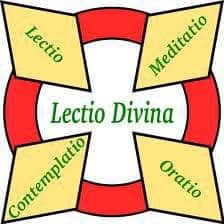 Dr. Daniel Harrington, S.J., professor of New Testament at Boston College recently posted at Huffington Post some reflections on the ancient practice of lectio divina (“divine” or “sacred reading”). This post picks up on Harrington’s chapter in The Bible and the Believer: How to Read the Bible Critically and Religiously
Dr. Daniel Harrington, S.J., professor of New Testament at Boston College recently posted at Huffington Post some reflections on the ancient practice of lectio divina (“divine” or “sacred reading”). This post picks up on Harrington’s chapter in The Bible and the Believer: How to Read the Bible Critically and Religiously co-author with me and Marc Brettler (Brandeis University) and published last month by Oxford University Press.
Lectio divina is an ancient Roman Catholic monastic pattern of reading Scripture, the goal of which is communion with God rather than intellectual analysis or study. It has also been an important element of the Anglican tradition and is gaining popularity among Protestants.
communion with God rather than intellectual analysis or study. It has also been an important element of the Anglican tradition and is gaining popularity among Protestants.
It may seem odd, then, for Harrington to claim: “Serious historical-critical biblical study and the devotional use of Scripture need not be viewed as opposites. In fact, they can and should enrich one another. Lectio divina provides a good framework for doing so.”
One of the stresses for believing biblical scholars is to bridge their academic study of Scripture with their own spiritual formation and that of their students. Harrington is suggesting a means of doing just that–a synthesis of old and new–and this biblical scholar appreciates his insights.
